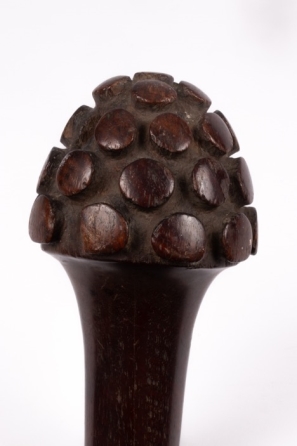Fijian war club set to be a hit with bidders
An exceptionally rare 19th-century Fijian Bulibuli war club looks set to be one of the big hitters in an upcoming sale at Chorley’s Auctioneers in Gloucestershire.
The unusual piece of Fijian war history was found in a Gloucestershire country home and is believed to have been acquired during travels by previous generations of the family of the current owners.

Werner Freundel, Director at Chorley’s auctioneers, said: “Fijian warriors were highly respected and the Bulibuli club was a personally tailored weapon – these were treasured possessions and important enough as cultural artefacts to be represented on the Fijian Coat of Arms. One occasionally finds these clubs in the collections of European nobility and with a British colonial history in Fiji it is no surprise that they are occasionally found in the UK. To find such a fine example in Gloucestershire came as a little bit of a surprise and the family were excited when we told them about its rarity.”
War clubs were the main weapon of combat for Fijian warriors and each club was individual to their combatant. They also differed depending on the terrain of the impending conflict, with some warriors fighting in the jungle and others fighting on the grasslands, or on water. Many clubs were also status items with highly decorated versions owned by chiefs, or priests, as a sign of their authority and hierarchy.

A club used to kill many enemies was believed to have a special ‘life power’ of its own, or ‘mana’, which were placed in a temple to the Gods of War. They have also been used historically as ritual objects in funerary rites and certain tribal ceremonies.
Fijian war clubs come in different shapes, as each weapon was designed to cause different injuries to its’ assailants. This Bulibuli example was known as a ‘striker’ or ‘crusher’, which was used with a downward smashing motion. They feature a very carefully formed and modified head and are a ‘status club’, so they are often very well carved. They are sometimes used with an Ula, which is of a similar design. Historians report that the terrible wounds inflicted by war clubs can still be seen on skulls in burial caves and that some warriors survived the heavy blows to live on for years with dramatically misshapen skulls.
The war club features a domed head with a series of carved flat protrusions inlaid with marine ivory and a carved handle. It will be offered at auction on May 22 with an estimate of £10,000-12,000.


